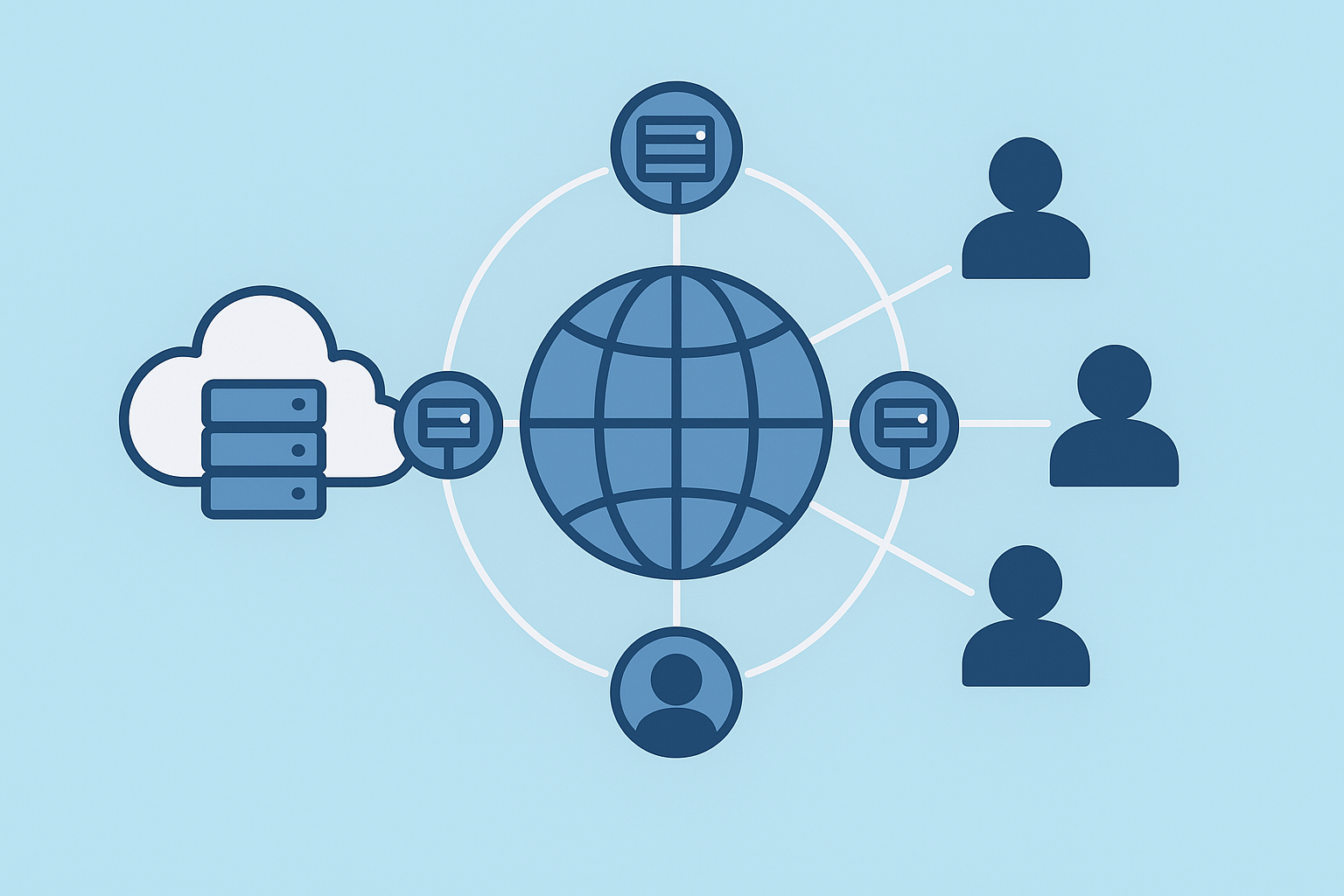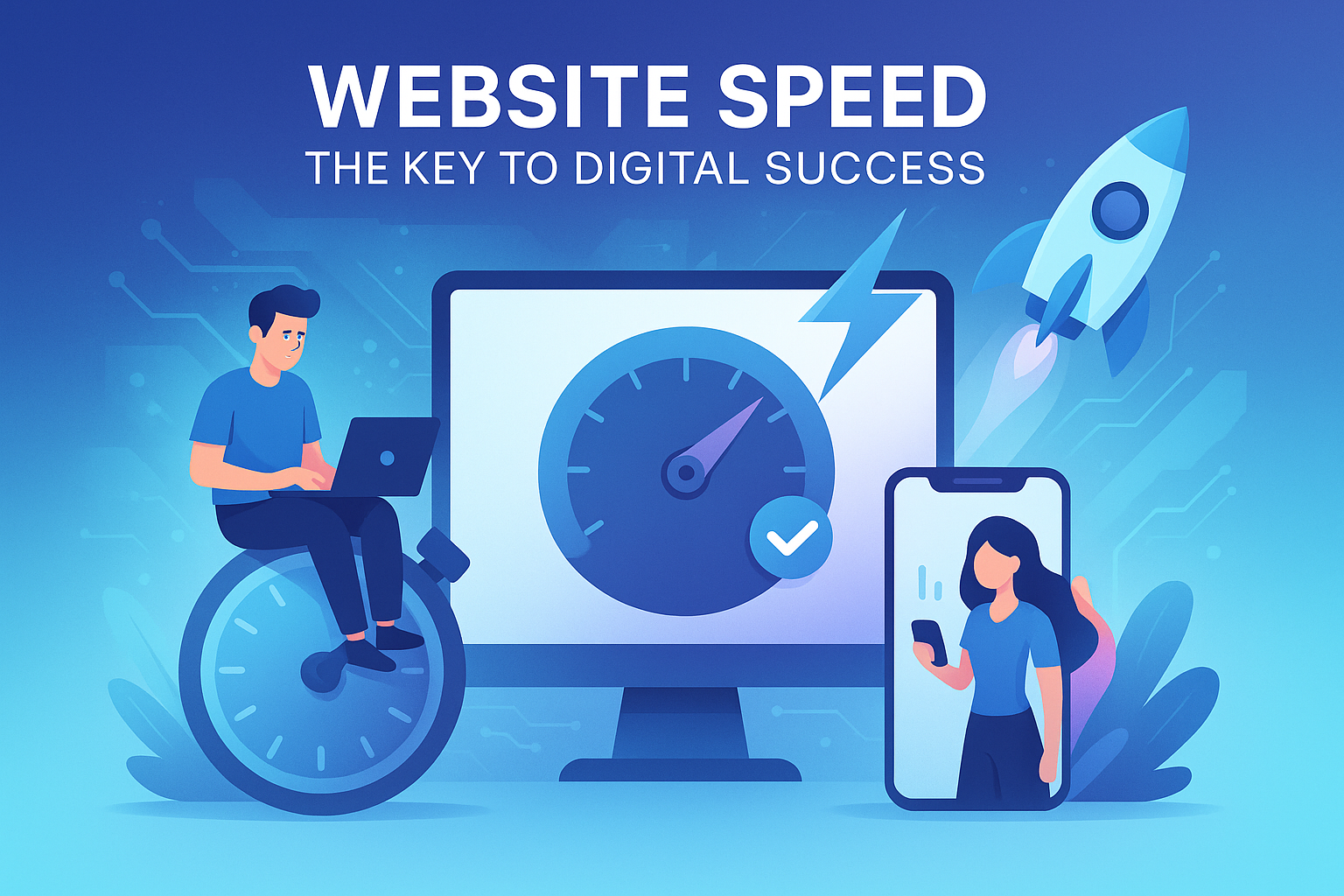Why Website Speed Is the New Competitive Edge in 2025?
In today’s hyper-competitive digital environment, website speed is not just a feature—it’s a foundational pillar of success. As we enter 2025, users expect digital experiences to be instant, seamless, and frictionless. A fast-loading website is no longer a technical luxury; it’s a strategic asset that directly influences how users engage, how search engines rank, and how revenue grows.
This guide explores the critical performance strategies and technologies you need to build and maintain ultra-fast websites that thrive in the 2025 digital ecosystem.
Why Website Speed Matters More Than Ever?
Website performance is a growth driver. Even minor delays can cause major losses:
-
7% drop in conversions per second of delay
-
11% fewer page views
-
16% decline in customer satisfaction
More importantly, Google’s Core Web Vitals algorithm makes performance a key SEO factor. If your site loads slowly, it won’t just frustrate users—it will underperform in rankings, ROI, and brand perception.
Fast websites:
-
Rank higher in search engines
-
Retain users longer
-
Convert better across all funnel stages
-
Build trust with smooth, reliable interactions

The Cost of Being Slow in 2025
Speed is now a baseline expectation. If your site fails to meet it, the consequences are immediate:
-
Lost mobile conversions in high-intent moments
-
Decreased SEO visibility
-
Frustrated users who equate speed with professionalism
And with tools like Lighthouse, PageSpeed Insights, and WebPageTest, your speed score is no longer hidden—it’s public, trackable, and a benchmark your competitors are already improving.
What’s Slowing Down Modern Websites?
Despite technological progress, many sites still suffer from:
-
Render-blocking JavaScript
-
Oversized, unoptimized media assets
-
Inefficient server-side logic
-
Poor caching policies
-
Third-party script overload
Identifying these bottlenecks is the first step. Eliminating them requires optimized frontend practices, efficient backend structure, and intelligent delivery via CDN.
CDN and Edge Delivery: The Performance Multiplier
Edge-first CDN platforms have evolved beyond static asset delivery. In 2025, advanced CDNs offer a critical performance layer by bringing content and processing closer to the user. Whether you’re serving static images, dynamic HTML, or API responses, a modern CDN can reduce latency, increase availability, and dramatically improve load times.
What Advanced CDNs Offer Today
-
Dynamic Content Acceleration:
Cache not just static files but also API responses and dynamic content using smart routing logic. Platforms like Medianova employ edge-based logic that analyzes user geography, device type, and request frequency to accelerate even personalized content delivery. -
Real-Time Cache Invalidation:
Don’t wait for cache refresh cycles. Medianova provides instant purging at the edge, triggered via API, by surrogate key, path, or tag. This ensures stale content never reaches end users—ideal for news, e-commerce, and high-change-rate platforms. -
HTTP/2, TLS 1.3, Brotli & More:
Medianova supports the latest web protocols and compression techniques out of the box, offering faster initial connections and leaner payloads without developer-side configuration. -
Security-Optimized Edge Delivery:
Built-in Web Application Firewall (WAF), DDoS protection, and TLS offloading occur directly at Medianova’s edge nodes, minimizing origin risk and offloading load from your infrastructure. -
API-First CDN Control:
Medianova’s developer-first platform includes detailed control over cache rules, routing logic, and advanced features like A/B testing at the edge, via RESTful APIs.

The Regional Advantage: Medianova’s Edge Network
For businesses targeting audiences in Turkey, the Middle East, and Eastern Europe, Medianova delivers a unique regional advantage:
-
Multiple edge nodes across Istanbul, Ankara, Riyadh, Dubai, Frankfurt, and Bucharest, ensuring true proximity-based delivery.
-
Sub-30ms latency across most Tier-1 and Tier-2 cities in the EMEA region.
-
99.99% uptime SLAs with localized support in Turkish and English.
-
Real-time analytics dashboards with granular Core Web Vitals and request profiling.
Whether you’re launching a high-traffic media portal, scaling a B2B SaaS application, or optimizing an enterprise e-commerce site, Medianova helps you reduce latency, cut server costs, and deliver faster digital experiences—where your users actually are.

Conclusion: Speed Is Strategy
Speed is no longer just a technical checkbox—it’s a competitive weapon, a growth lever, and a trust signal all in one. In 2025’s digital landscape, where user expectations are higher than ever, a delay of even a single second can mean the difference between a sale and a lost customer, a click and a bounce, a loyal user and an abandoned session.
A fast-loading website is more than a performance win—it’s a business advantage. It signals professionalism, reliability, and technical competence. It ensures that your message, product, or service reaches your audience before they even consider alternatives.
But building a high-speed experience is not about cutting corners or simply compressing assets. It’s about investing in smart infrastructure, adopting edge-first architectures, optimizing across both frontend and backend, and partnering with regional CDN providers like Medianova who understand your market, offer local support, and deliver consistently low-latency performance where it matters most.
When you prioritize speed, you’re not just meeting expectations—you’re exceeding them. You’re building websites and platforms that rank better, convert faster, and build lasting relationships with users.
Because in 2025, speed isn’t just strategy—it’s survival.
And in the race for digital dominance, only the fastest brands win.



